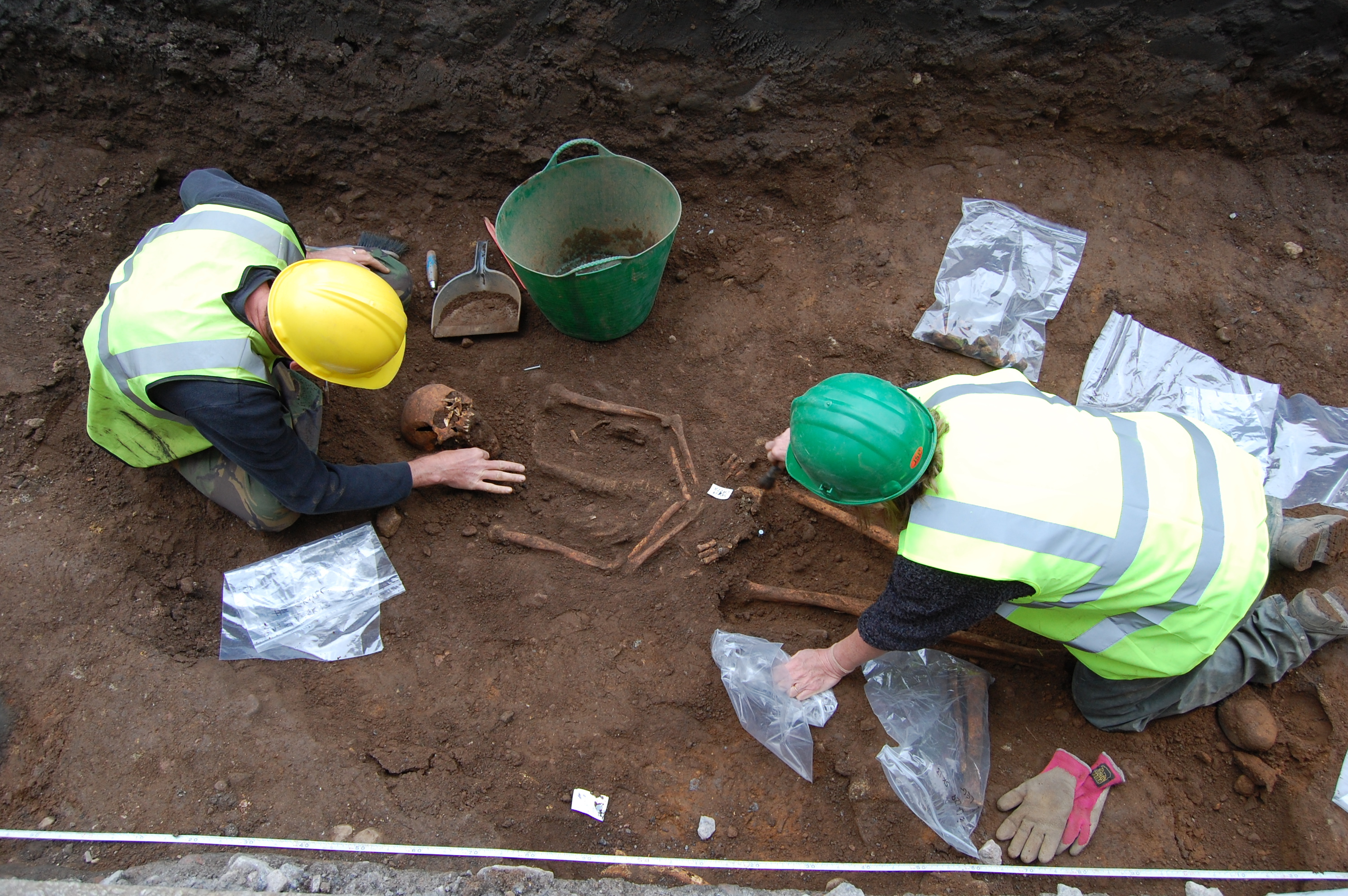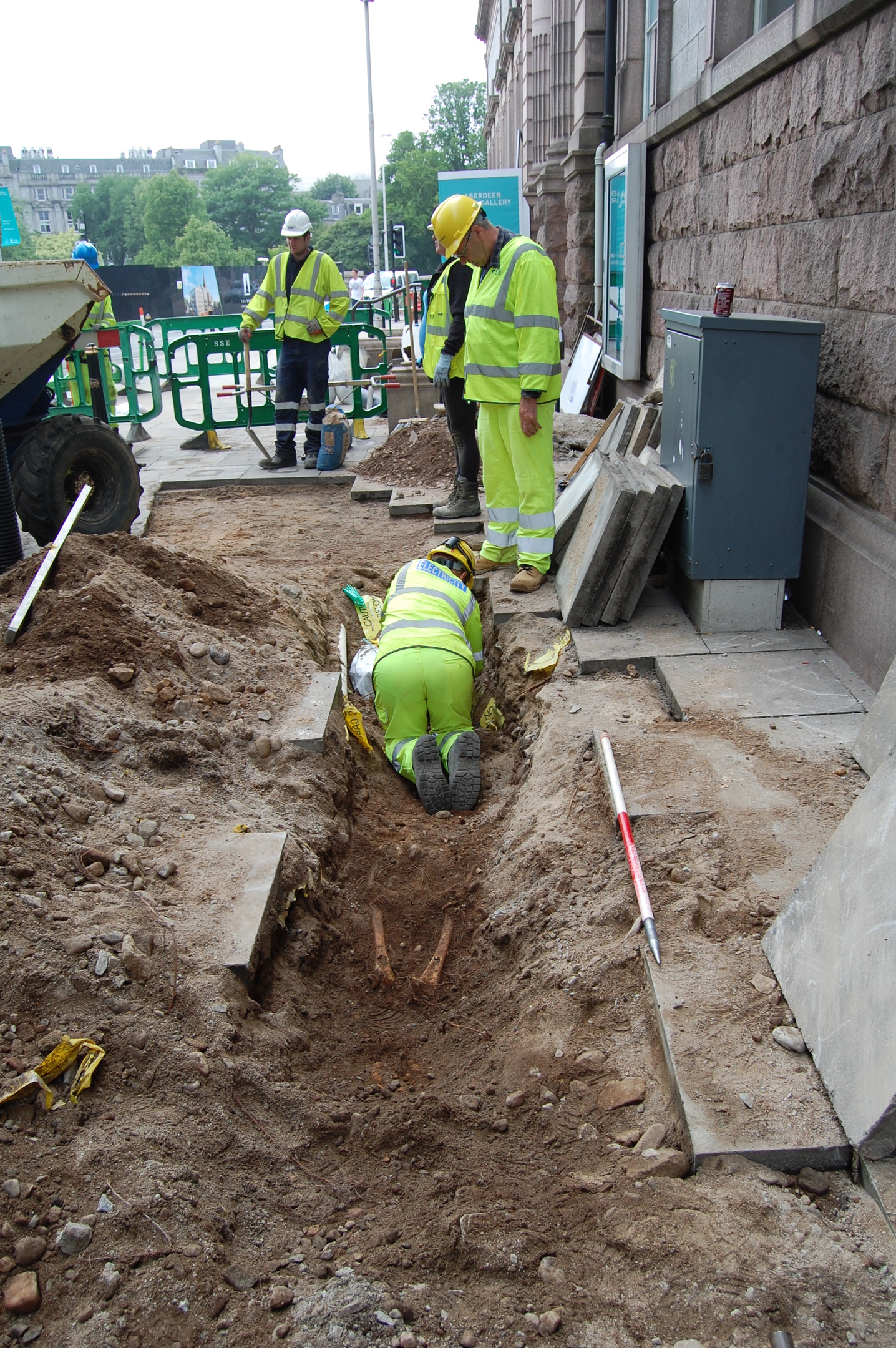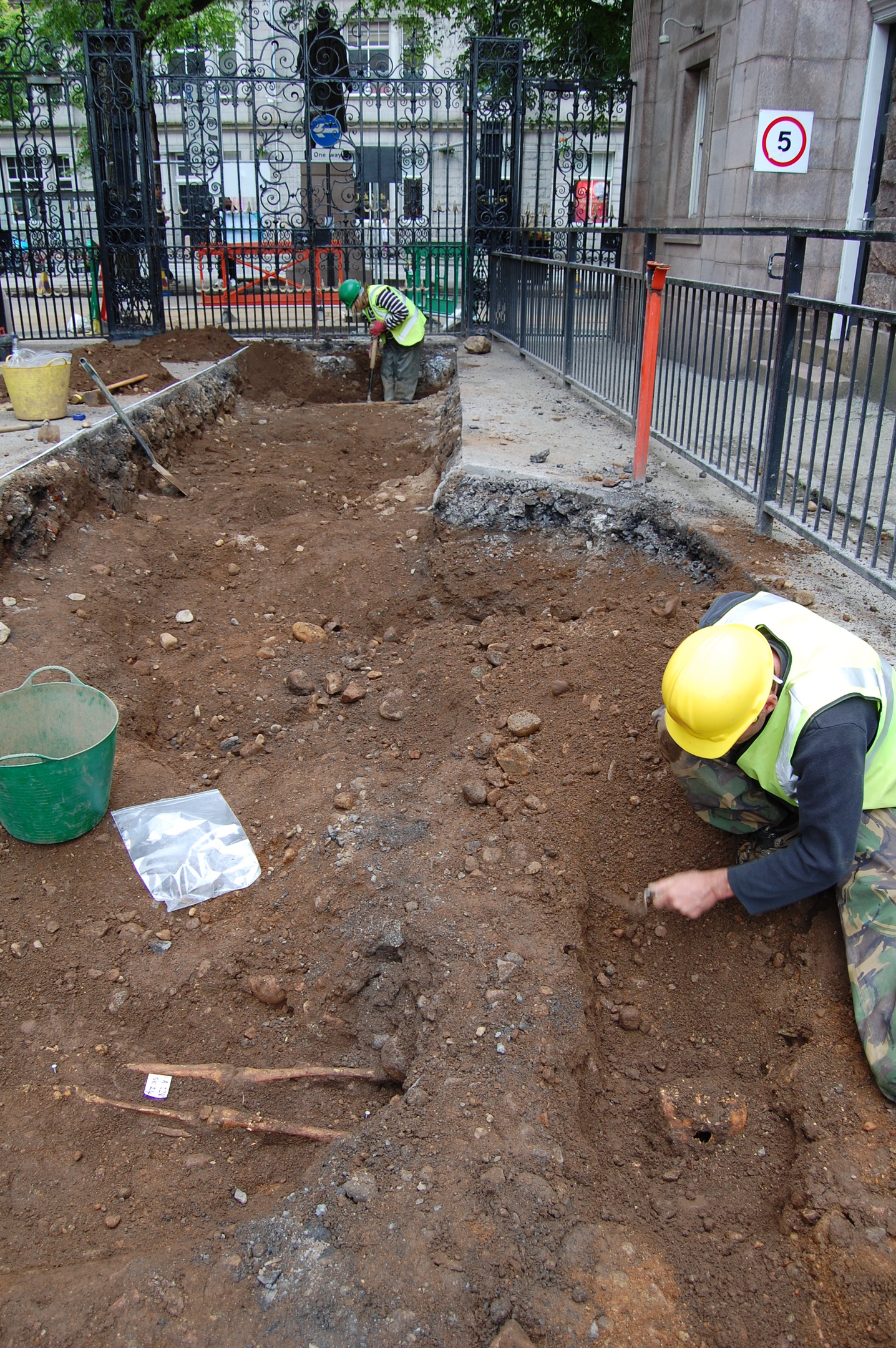Even more skeletons have been unearthed in Aberdeen city centre in what experts are calling a “hugely significant” discovery.
Contractors from Chap construction and Scottish and Southern Energy (SSE) made the shock find on July 6 while carrying out utility works for a new boiler plant at Robert Gordon University’s (RGU) Schoolhill administration building.
It had been thought that a total of 25 skeletons had been found, however after drafting in dig teams from Aberdeenshire Council and the firm Cameron Archaeology, a total of 30 skeletons have now been discovered just inches under the pavement, with the possibility of even more yet to be uncovered.
Bruce Mann, an archaeologist for Aberdeenshire council, said that the mass grave is the clearest evidence yet for the site of the 13th century Blackfriars Abbey, the exact location of which has long eluded historians researching Aberdeen’s early history.
Mr Mann said: “We’re fairly confident that a wall we have found underground, with buttressing, is fairly indicative of the site of the church itself, it might have formed a potential part of the friary.
“The church building itself would have run largely underneath the art gallery, and the rest of the buildings would have extended towards Robert Gordon’s College and the quadrangle itself.
“There’s quite a few skeletons that have been uncovered by previous work in Aberdeen, however to find a long-lost priory like this is an incredibly rare occurrence.”
Although the researchers will have to wait for radiocarbon dating to find an exact age of the bones, pottery and other relics have already been found at the site dating to the late 13th century.
Mr Mann continued: “It’s very early days yet in terms of understanding exactly what we have here.
“A lot of research needs to be undertaken on the skeletons that we’ve dug up, and given the number we have it might take several months.
“We will be able to extract so much information from these skeletons, the people’s age, their gender, how old they were, to give us a much better idea of who they were.
“We know that they would have been wealthy, because you had to pay to get buried in the priory, so to be buried there would imply a certain status, as well as the extra care given during the burials.
“It’s a hugely significant part of the story of the city, and I’m extremely excited to see how this story unfolds.”



